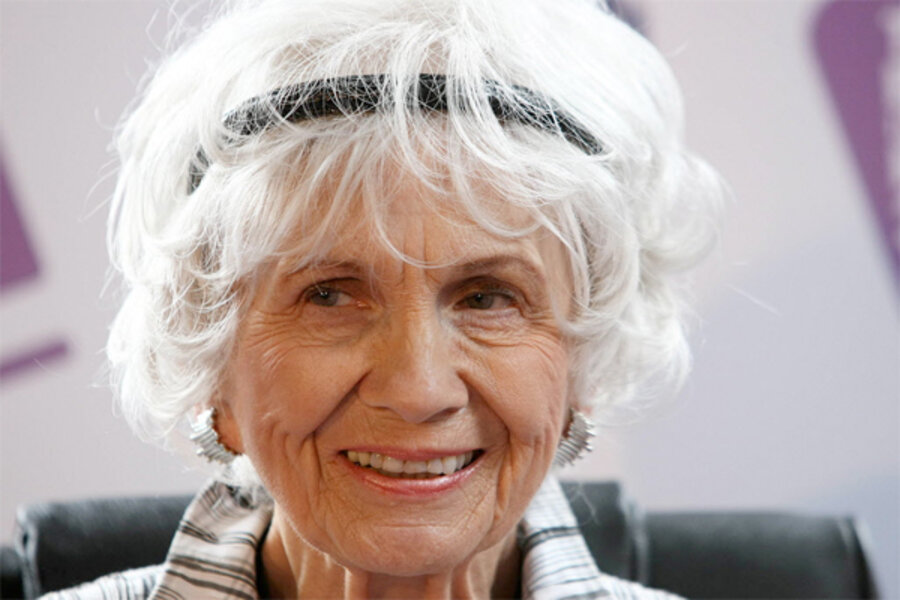Alice Munro: a collection to bring her work to the world
Loading...
Canadian short story writer Alice Munro officially receives the Nobel Prize in Literature today and her American publisher is using the occasion to introduce new readers to her work.
In conjunction with today’s ceremony, Everyman’s Library, an imprint of Alfred A. Knopf that specializes in classic writers, is releasing “Carried Away: A Personal Selection of Stories,” which includes 17 stories chosen by Munro herself. The stories draw heavily on Munro’s home region of southwestern Ontario, which fellow Canadian author Margaret Atwood says has been as important to Munro’s fiction as William Faulkner’s fictional Yoknapatawpha County was to his.
There’s no new material here; Munro announced a few months ago that she’s retired from writing. But the stories in “Carried Away” offer a thumbnail survey of Munro’s long career in short fiction – a nice way for newcomers to find out why Munro was tapped as a Nobel laureate.
Atwood, who introduces the collection, doesn’t seem surprised by Munro’s relatively low profile in international letters, in spite of winning the Nobel Prize.
“She’s the kind of writer about whom it is often said – no matter how well-known she becomes – that she ought to be better known,” Atwood tells readers.
Atwood says that part of the reason for Munro’s modest reputation is her chosen genre of the short story, a form that doesn’t get much respect.
“Though many American and British and Canadian writers of the first rank have practiced this form, there is still a widespread tendency to equate length with importance,” Atwood writes. “Thus Alice Munro has been among those writers subject to periodic rediscovery – or at least outside of Canada. It’s as if she jumps out of a cake – Surprise! – and then has to jump out of it again, and then again. Readers don’t see her name in lights on every billboard.”
With today’s Nobel Prize award, Munro might no longer have to jump out of cakes to get noticed.
Danny Heitman, a columnist for The Advocate newspaper in Louisiana, is the author of “A Summer of Birds: John James Audubon at Oakley House.”







